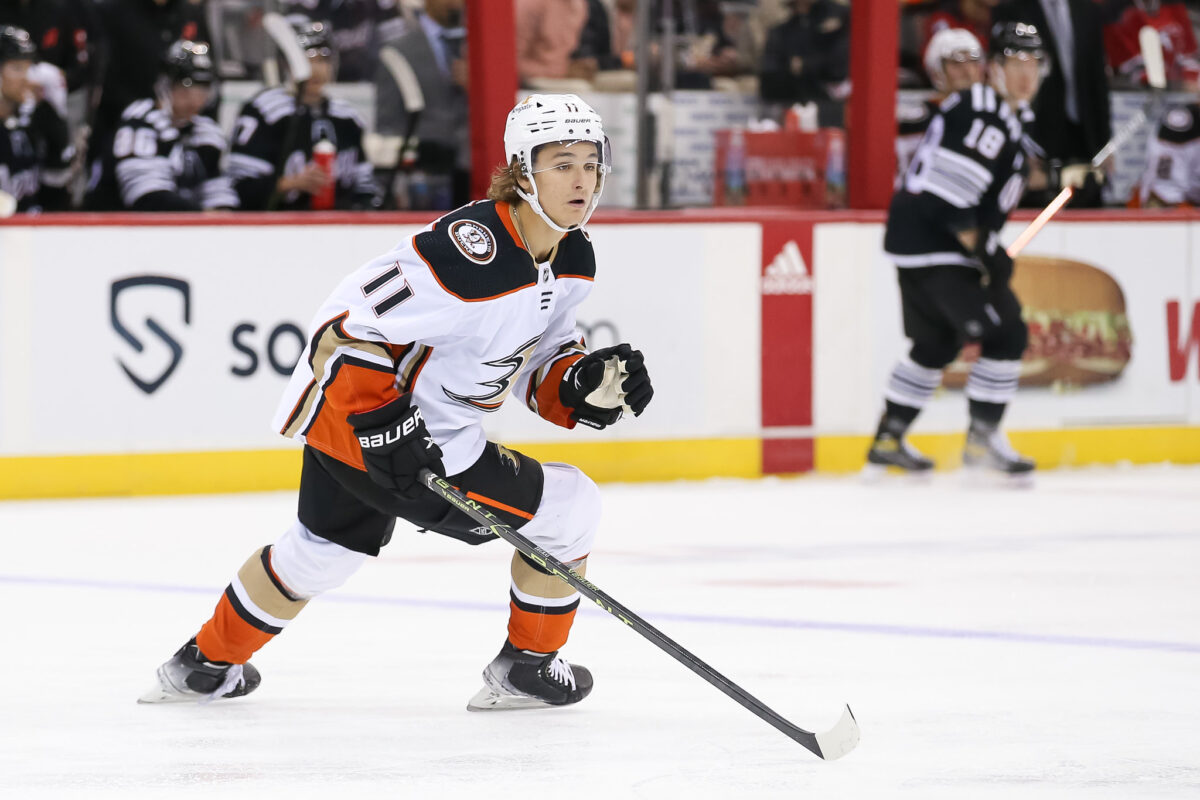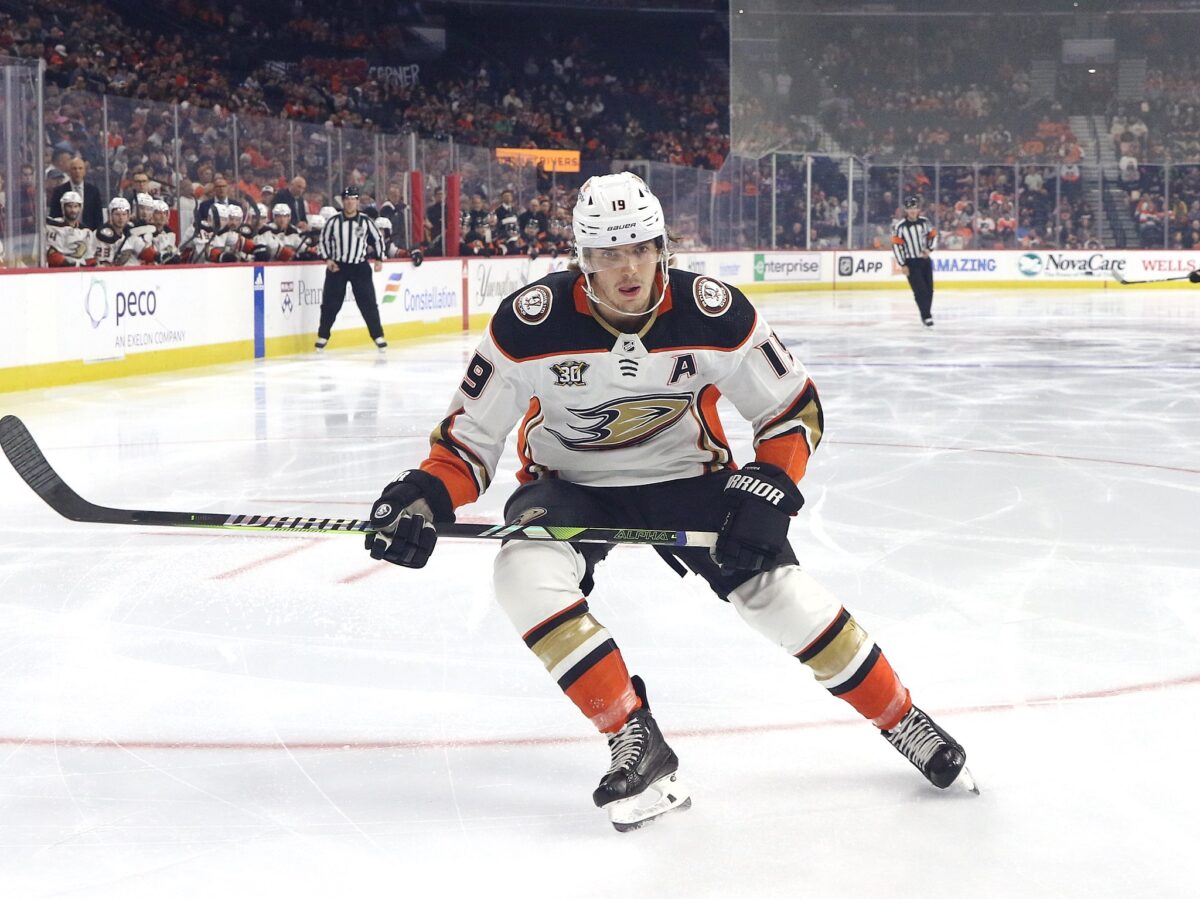If the opening night roster for the Anaheim Ducks turns out as expected, then Troy Terry, Trevor Zegras, and Cutter Gauthier will be healthy lineup fixtures commanding serious minutes on a nightly basis. However, with just over two weeks until opening night (Oct. 12, San Jose Sharks), there is plenty that can happen that can put a dent in the Ducks’ plans to enter the season healthy. In fact, it has already happened. John Gibson had emergency surgery on his appendix and will miss three to six weeks. This follows a foot fracture to 2024 draftee Beckett Sennecke and a ruptured ACL to Tomas Suchanek. Let’s not forget about last season, when Alex Killorn and Leo Carlsson suffered training camp injuries.
But let’s take a breath and not worry about that for a second. Let’s have some fun with a preseason hypothetical: what if the Ducks formed an all-American top line featuring Terry, Zegras, and Gauthier? Let’s look at their skills, whether it would work, and if it will happen. Onward we go.
Zegras, Terry, and Gauthier Each Bring Unique Skills to the Table
Assessing the cohesion of this trio requires an understanding of the unique skill sets they bring to the ice. Since we’ve covered these young stars extensively, we can summarize. Let’s start with Terry, who is the most seasoned finisher in the Ducks lineup at the moment.
Terry has been the shining star in Anaheim (and its leading scorer) since the departure of Ryan Getzlaf and has finished at or near the top in team scoring since the 2021-22 season when he exploded for 37 goals. Only Frank Vatrano has outdueled him since when he had 37 goals of his own last season to Terry’s 20. Terry is dangerous both with and without the puck. He is slippery, knows how to get to high-danger scoring areas, and uses his feet, hands, and shot effectively to make plays for himself or put himself in position to convert opportunities set up by other playmakers. He enters the second season of a seven-year, $49-million extension in 2024-25. After suffering from declined production (not entirely his fault) since his breakout in 2021-22, he needs to find his 37-goal form again if the Ducks are to win more games.
Let’s move to Zegras, who is an electric playmaker with all-world hands and vision. While we did catch glimpses of that in 2023-24, particularly toward the end of the campaign when he was healthy, it was a mostly lost season for the forward, who missed 51 games with different injuries.
At his best, Zegras is making plays for his teammates and facilitating with his eyes, hands, and hockey IQ, which rival that of elite offensive players in the game today. He can be on that level. He has also made it a point to improve his two-way game, which was praised at multiple points throughout last season by head coach Greg Cronin. To drive home the notion that he, like Terry, is one of a few on the roster capable of being the most dangerous guy on the ice, consider this: he had eight points (two goals, six assists) in his final eight games of last season, including a five-game point streak. By the looks of his training camp, he looks more than ready to pick that momentum back up.

Now, to Gauthier, the rookie carrying the weight of expectation heading into his first season. He strengthened himself in preparation for the physicality of the pro game. If you ask him, he’s ready for it, stating, “I’m feeling a lot better on the ice, feeling more dominant, more controlled going into the corners for puck battles and stuff.” The former Boston College Eagle enters his rookie campaign armed with a pro-level shot (38 goals in sophomore season at BC), an NHL-ready frame (6-foot-2, 210 pounds), and the desire to get to work and make an impact right away. Like Terry, he is a finisher. He should get the chance to become a dependable one right when the season begins. Like Terry and Zegras, Gauthier can become the most dangerous player in the lineup.
Would This Combination Work for the Ducks?
So, each of these guys is uniquely skilled. They can all be dangerous in their own ways. We get that. Would it work if all of them played together on a line?
I think yes, and why not? A forward line’s success depends on the trio’s ability to complement each other and bring different things to the table, and all three have differentiating qualities. Terry is a right-handed shot who can play on and off the puck. Zegras is a dynamic playmaker at his best when the puck is on his stick and has options on his flank to make plays with. Gauthier is a left-handed finisher who knows how and where to go to score. He can also play with and without the puck. All three can skate well and are threats to shoot.
It’s not the most diverse combination the Ducks can drum up, but who wouldn’t want to see a trio with so much offensive potential skate together? Each of these guys has said at one point or another that they want to be complete forwards, and they very well may get there. But for now, this hypothetical line’s primary focus would be driving offense. Carlsson demonstrated that he is well on his way to doing that, but this combination is no doubt the most skilled and packed with creativity, speed, hockey IQ, and a finishing touch.
The Drawbacks for the Ducks
Well, our analysis above included a concession about the trio, which is that they, as of now, are not the most complete, two-way hockey players. Not being able to defend or retrieve the puck effectively can neutralize the strengths of this combination, and thus get in the way of success or cohesion. For all of the offensive prowess possessed by Zegras and Terry, they are still minus players. They get scored on more than they produce. Though Gauthier claims he is ready for the physicality of the NHL, he won’t really know if he can ward off defenders in the corners until it happens. None of this needs to be true forever, and we’ll know in short order what’s in store for these men.

The other thing that makes this line perhaps too good to be true? It may not be diverse enough, from a talent perspective, to be a feasible combination. Say for instance, that this was a line the Ducks rolled with. There are a number of questions in need of answers. Does it make sense to play your top two projected scorers on the same line? How about where this leaves Carlsson and Mason McTavish? They are both centermen; Carlsson’s game is predicated on speed, but McTavish’s is not. Do you play them together or separate them? As fun as it could be, one can see why it may make sense to spread them around.
Big Seasons Await These Three Ducks, Together or Not
So, we’ve examined why this hypothetical line could work and why it couldn’t. There are feasible arguments in favor of both, but by the looks of the Ducks’ training camp so far, it’s not a combination the Ducks are considering as of yet. It sure would be fun to watch though, wouldn’t it?
Related: Anaheim Ducks’ 3 Keys to a Successful 2024-25 Season
Currently, the top two forward lines are shaping up to be Killorn-Carlsson-Gauthier and Terry-McTavish-Zegras. Objectively, these should work very well. But Cronin changed lines many times last season, and who’s to say Terry, Zegras, and Gauthier don’t get a look if current combinations don’t hold? Time will tell, but if one thing is true, it’s this: no matter the combinations, big things are expected from the Ducks’ plethora of young forwards in 2024-25.
